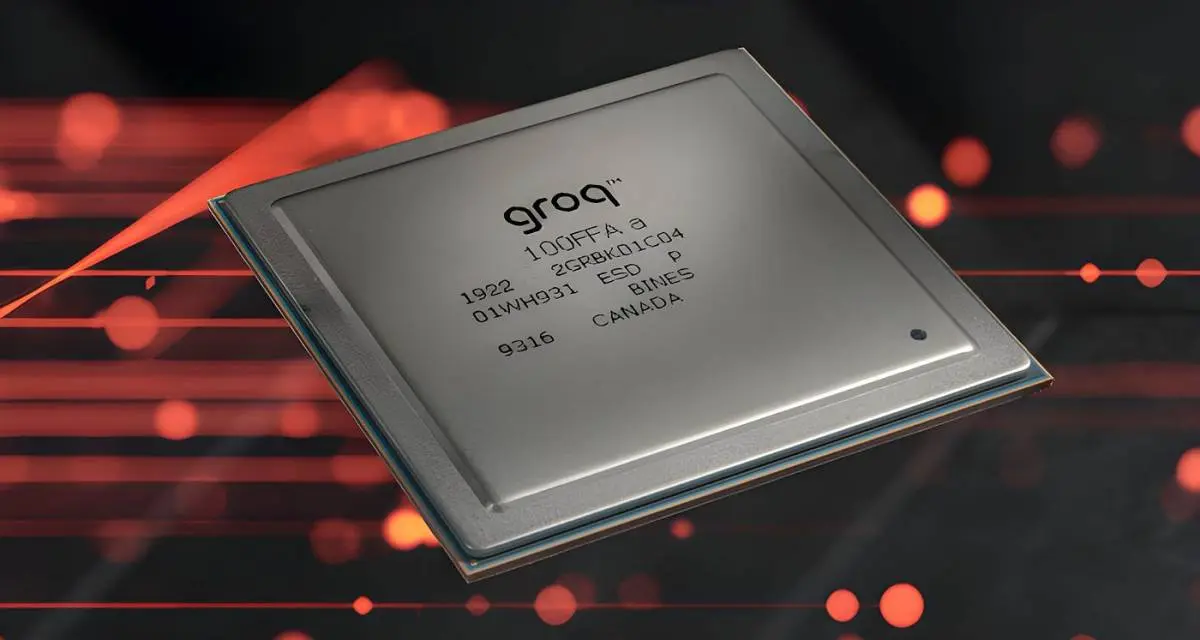AMD's Path to a $1 Trillion Market Cap by 2030: Analyzing Growth Potential
2 Sources
2 Sources
[1]
Can AMD Stock Reach a $1 Trillion Market Cap by 2030?
Currently, there are seven stocks with valuations topping at least $1 trillion. By the end of the year, there could be a couple more companies joining that list. And by the end of the decade, there will likely be even more. One company that possesses tremendous growth opportunities related to artificial intelligence (AI) and may join that exclusive club in the future is chipmaker Advanced Micro Devices (NASDAQ: AMD), better known as AMD. Today, its market cap is around $300 billion. Can investors expect that by 2030, it will be able to reach a $1 trillion valuation? AMD's stock would need to grow by more than 20% per year For AMD to more than triple in value by the end of the decade and hit a $1 trillion market cap, the stock price would need to rise by around 245%. Over a six-year span, that averages out to an annual growth rate of approximately 23%. Historically, AMD has been a good growth stock to own -- its share price has soared by more than 420% in just the past five years. But with the business becoming larger, expectations rise, and it's not as easy to increase sales and profits at a high rate. In the past three years, for example, AMD's top line has gone from $9.8 billion in 2020 to $22.7 billion in 2023. For it to achieve similar growth in the next three years, its annual sales would need to total nearly $53 billion. Whether it can deliver that kind of growth will depend on its ability to steal some market share away from chipmaker and key rival Nvidia. Artificial intelligence will determine AMD's long-term gains There are some truly staggering growth opportunities in the AI chip market. Just about every company is trying to roll out new AI-powered products and services to avoid missing out on the latest craze in tech. According to a report from analysts at Technavio, the AI chip market is expanding at a compound annual growth rate of more than 68% until 2028. While Nvidia is a leading player in that space today, if AMD can secure some of the market for itself, it may not be all that difficult for the business to generate significant growth in the years ahead and for the stock to continue rallying. AMD is working on launching new AI chips in order to try and take on Nvidia, which has about an 80% market share today. Last month, AMD CEO Lisa Su said, "AI is clearly our No. 1 priority." One of its newest chips, MI350, will be available next year, which will perform much better than its current MI300 chips. And in 2026, AMD plans to roll out the MI400, a series of chips that will be based on even newer technology. AMD looks likely to hit $1 trillion by 2030 Nvidia garners a lot of the excitement when it comes to AI these days. But companies will want alternatives and other businesses to buy chips from. And as AMD's new chips come to market, potentially offering lower-cost alternatives, it could benefit from strong demand and high growth rates for years to come. For AMD to more than triple in value in about six years isn't all that unlikely given the promising opportunities in the AI chip market. As long as the company can successfully execute and take some market share from Nvidia, it looks highly probable that the business will grow at a fast enough rate to send its stock to a $1 trillion valuation by 2030. Should you invest $1,000 in Advanced Micro Devices right now? Before you buy stock in Advanced Micro Devices, consider this: The Motley Fool Stock Advisor analyst team just identified what they believe are the 10 best stocks for investors to buy now... and Advanced Micro Devices wasn't one of them. The 10 stocks that made the cut could produce monster returns in the coming years. Consider when Nvidia made this list on April 15, 2005... if you invested $1,000 at the time of our recommendation, you'd have $774,281!* Stock Advisor provides investors with an easy-to-follow blueprint for success, including guidance on building a portfolio, regular updates from analysts, and two new stock picks each month. The Stock Advisor service has more than quadrupled the return of S&P 500 since 2002*. David Jagielski has no position in any of the stocks mentioned. The Motley Fool has positions in and recommends Advanced Micro Devices and Nvidia. The Motley Fool has a disclosure policy. The views and opinions expressed herein are the views and opinions of the author and do not necessarily reflect those of Nasdaq, Inc.
[2]
Can AMD Stock Reach a $1 Trillion Market Cap by 2030? | The Motley Fool
AMD has been a growth beast over the years, but if it wants to continue that trend, it will have a tall task in taking on Nvidia. Currently, there are seven stocks with valuations topping at least $1 trillion. By the end of the year, there could be a couple more companies joining that list. And by the end of the decade, there will likely be even more. One company that possesses tremendous growth opportunities related to artificial intelligence (AI) and may join that exclusive club in the future is chipmaker Advanced Micro Devices (AMD -10.21%), better known as AMD. Today, its market cap is around $300 billion. Can investors expect that by 2030, it will be able to reach a $1 trillion valuation? For AMD to more than triple in value by the end of the decade and hit a $1 trillion market cap, the stock price would need to rise by around 245%. Over a six-year span, that averages out to an annual growth rate of approximately 23%. Historically, AMD has been a good growth stock to own -- its share price has soared by more than 420% in just the past five years. But with the business becoming larger, expectations rise, and it's not as easy to increase sales and profits at a high rate. In the past three years, for example, AMD's top line has gone from $9.8 billion in 2020 to $22.7 billion in 2023. For it to achieve similar growth in the next three years, its annual sales would need to total nearly $53 billion. Whether it can deliver that kind of growth will depend on its ability to steal some market share away from chipmaker and key rival Nvidia. There are some truly staggering growth opportunities in the AI chip market. Just about every company is trying to roll out new AI-powered products and services to avoid missing out on the latest craze in tech. According to a report from analysts at Technavio, the AI chip market is expanding at a compound annual growth rate of more than 68% until 2028. While Nvidia is a leading player in that space today, if AMD can secure some of the market for itself, it may not be all that difficult for the business to generate significant growth in the years ahead and for the stock to continue rallying. AMD is working on launching new AI chips in order to try and take on Nvidia, which has about an 80% market share today. Last month, AMD CEO Lisa Su said, "AI is clearly our No. 1 priority." One of its newest chips, MI350, will be available next year, which will perform much better than its current MI300 chips. And in 2026, AMD plans to roll out the MI400, a series of chips that will be based on even newer technology. Nvidia garners a lot of the excitement when it comes to AI these days. But companies will want alternatives and other businesses to buy chips from. And as AMD's new chips come to market, potentially offering lower-cost alternatives, it could benefit from strong demand and high growth rates for years to come. For AMD to more than triple in value in about six years isn't all that unlikely given the promising opportunities in the AI chip market. As long as the company can successfully execute and take some market share from Nvidia, it looks highly probable that the business will grow at a fast enough rate to send its stock to a $1 trillion valuation by 2030.
Share
Share
Copy Link
Advanced Micro Devices (AMD) is eyeing a trillion-dollar market cap by 2030. This article examines the company's growth strategies, market position, and the challenges it faces in achieving this ambitious goal.

AMD's Ambitious Goal
Advanced Micro Devices (AMD), a leading semiconductor company, has set its sights on achieving a $1 trillion market capitalization by 2030. This ambitious target has sparked discussions among investors and industry analysts about the company's growth potential and the feasibility of such a significant valuation increase
1
.Current Market Position
As of July 2023, AMD's market cap stands at approximately $184 billion, which means the company would need to grow by more than five times its current value to reach the trillion-dollar milestone
2
. This represents a compound annual growth rate (CAGR) of roughly 24% over the next seven years, a challenging but not impossible feat given AMD's historical performance and future prospects.Growth Drivers
AMD's potential for reaching the $1 trillion mark is underpinned by several key factors:
- Expanding market share in CPUs and GPUs
- Strong position in the data center and cloud computing markets
- Advancements in artificial intelligence (AI) and machine learning technologies
- Potential growth in emerging markets such as automotive and edge computing
The company's recent success in gaining market share from competitors, particularly in the data center segment, has been a significant driver of its growth
1
.Challenges and Risks
Despite AMD's strong growth trajectory, several challenges could impede its path to a $1 trillion valuation:
- Intense competition from industry giants like Intel and Nvidia
- Cyclical nature of the semiconductor industry
- Potential economic downturns or market corrections
- Geopolitical tensions affecting global supply chains
Additionally, the company's ability to maintain its technological edge and continue innovating in rapidly evolving markets will be crucial for sustaining its growth momentum
2
.Related Stories
Investor Sentiment and Market Dynamics
The stock market's perception of AMD's growth potential will play a significant role in determining whether the company can achieve its trillion-dollar aspiration. Factors such as price-to-earnings ratios, revenue growth, and profit margins will be closely scrutinized by investors as they assess AMD's long-term value proposition.
Strategic Initiatives
To reach its ambitious goal, AMD is focusing on several strategic initiatives:
- Expanding its product portfolio to address a wider range of market segments
- Investing heavily in research and development to maintain technological leadership
- Strengthening partnerships with key customers and suppliers
- Exploring potential acquisitions or mergers to accelerate growth
The success of these initiatives, coupled with favorable market conditions, will be critical in determining whether AMD can join the exclusive club of trillion-dollar companies by 2030
1
2
.References
Summarized by
Navi
Related Stories
AMD's AI Chip Strategy: Challenges and Opportunities in the Competitive Semiconductor Market
17 Jan 2025•Business and Economy

Nvidia's Potential to Reach $50 Trillion Valuation: Analyzing the AI Giant's Future
24 Jul 2024

AMD's AI Strategy Drives Growth and Market Share Gains in Data Center and PC Segments
16 May 2025•Technology

Recent Highlights
1
Google launches Gemini 3 Flash as default AI model, delivering speed with Pro-grade reasoning
Technology

2
OpenAI launches ChatGPT app store, opening doors for third-party developers to build AI-powered apps
Technology

3
OpenAI pursues $100B funding round at $830B valuation as Amazon investment talks intensify
Business and Economy





